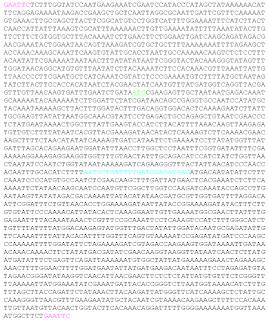102 Americans (25 of each major ethnicity) were typed and they looked at genes where there were several SNPs that had large frequency differences. A spermatogenesis related gene showed up, like they do in several of the signature of positive selection studies. What's up with that?...no one really talks about it. They also find LYST, involved in immune function and skin color.
They find no fixed differences for any SNP between any of the subpopulations (maybe because they're all somewhat admixed). There's also issues about how these SNPs were ascertained and the fact that less than one percent are in exons...
I wish they had some more detailed information on the ethnicity of the typed individuals.
Finally, the discussion has an interesting part on the under-appreciated role of purifying selection (or relaxation thereof) in genetic differences between groups and this paragraph, which I'm still trying to fully digest:
Moreover, from the point of view of identifying the genetic basis of health differences between human subpopulations, it may not be particularly important whether drift or selection is responsible for a given difference. In either case, the relaxation of purifying selection on a given SNP site implies that the allelic differences at this site are not likely to be deleterious. This in turn implies that major health differences between human subpopulations are likely to involve not deleterious genes per se but rather deleterious gene-by-environment interactions.
Genome-wide SNP typing reveals signatures of population history Austin L. Hughes, Robert Welch, Vinita Puri, Casey Matthews, Kashif Haque, Stephen J. Chanock and Meredith Yeager
Genomics Available online 16 May 2008.
Abstract: Single-nucleotide polymorphism (SNP) arrays have become a popular technology for disease-association studies, but they also have potential for studying the genetic differentiation of human populations. Application of the Affymetrix GeneChip Human Mapping 500K Array Set to a population of 102 individuals representing the major ethnic groups in the United States (African, Asian, European, and Hispanic) revealed patterns of gene diversity and genetic distance that reflected population history. We analyzed allelic frequencies at 388,654 autosomal SNP sites that showed some variation in our study population and 10% or fewer missing values. Despite the small size (23–31 individuals) of each subpopulation, there were no fixed differences at any site between any two subpopulations. As expected from the African origin of modern humans, greater gene diversity was seen in Africans than in either Asians or Europeans, and the genetic distance between the Asian and the European populations was significantly lower than that between either of these two populations and Africans. Principal components analysis applied to a correlation matrix among individuals was able to separate completely the major continental groups of humans (Africans, Asians, and Europeans), while Hispanics overlapped all three of these groups. Genes containing two or more markers with extraordinarily high genetic distance between subpopulations were identified as candidate genes for health differences between subpopulations. The results show that, even with modest sample sizes, genome-wide SNP genotyping technologies have great promise for capturing signatures of gene frequency difference between human subpopulations, with applications in areas as diverse as forensics and the study of ethnic health disparities.
 This is an interesting question and one that Dan at Genetic Future explores at length.
This is an interesting question and one that Dan at Genetic Future explores at length.

